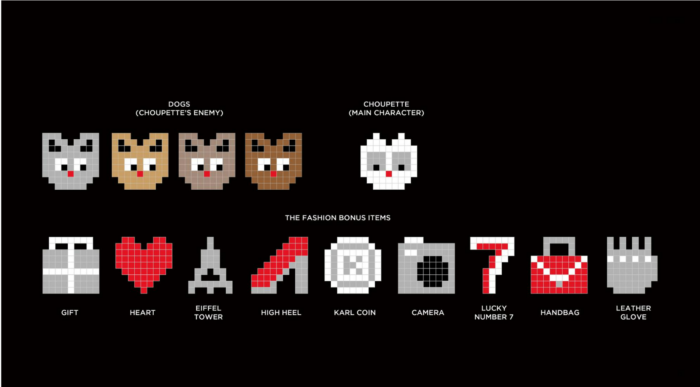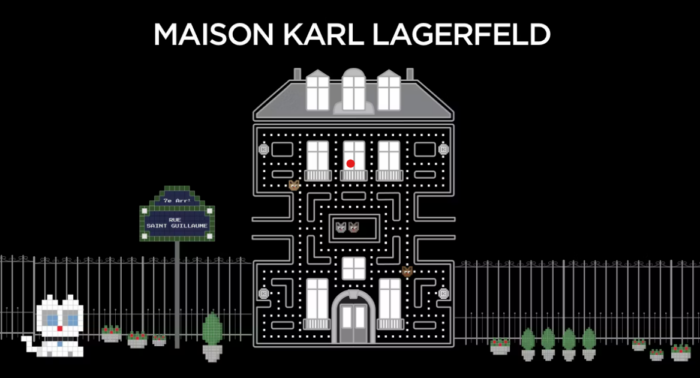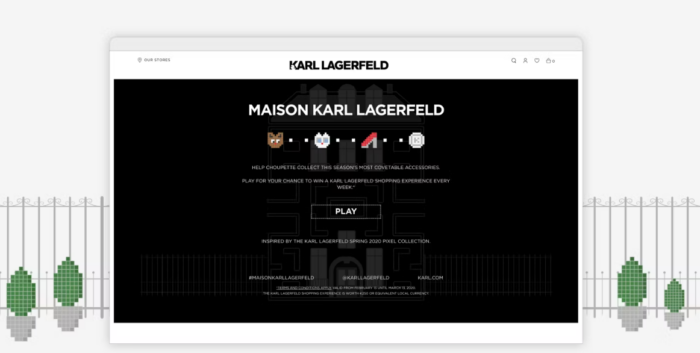Karl Lagerfeld was one of the most iconic and influential figures in the fashion industry. Known for his creative vision, impeccable style, and boundary-pushing designs, Lagerfeld was also a passionate lover of cats. His beloved pet Choupette became a fashion icon, with her own Instagram account and book. Lagerfeld’s love for his friend inspired the mobile game “Choupette’s Diary”. This game allowed players to interact with Choupette and experience a day in the life of Lagerfeld’s famous feline companion. Once again Lagerfeld showed his creative genius and his ability to capture people hearts and imagination worldwide. Let’s explore Karl Lagerfeld’s Choupette game influence on the fashion industry through gamification.
Section 1: Lagerfeld’s game: A fashion Way to Engage Customers

The fashion industry is constantly evolving, and brands are always seeking new ways to engage customers and create a memorable shopping experience. One innovative way that fashion brands are achieving this is through gamification. Fashion brands are using gamification to create interactive experiences that engage customers, build brand loyalty, and ultimately increase sales.
Adidas is one brand that has successfully implemented gamification in the fashion industry. The Adidas Tango app, for example, uses augmented reality to create a soccer game. The game encourages users to earn points, unlock new levels, and compete with friends. Burberry is another brand that has used gamification to great effect. The Burberry Kisses campaign allows users to send virtual kisses to loved ones. This campaign evolved rapidly on social media, by shating the kisses on a virtual map.
The potential benefits of gamification in fashion are numerous. By creating an interactive and engaging experience, brands can capture customers’ attention, increase their emotional connection with the brand, and ultimately drive sales. Additionally, gamification can provide valuable data on customer preferences and behaviors. The brands are then able to create more personalized and effective marketing campaigns.
Section 2: The idea Behind Lagerfeld “Choupette’s Diary” mobile game.

Karl Lagerfeld was not only a fashion icon but also a well-known cat lover. His beloved cat Choupette was a constant presence in his life, and he often spoke about her in interviews and public appearances. Lagerfeld famously referred to Choupette as his “adopted daughter” and even joked that she was the most famous cat in the world. Lagerfeld’s love for Choupette inspired the creation of “Choupette’s Diary,” a mobile game that allows players to interact with the famous feline. The game was designed to provide an interactive and playful experience for cat lovers and fashion enthusiasts alike. The purpose of the game was to engage customers and promote Lagerfeld’s brand through a new medium.
The game features Choupette as the main character, with players assuming the role of her personal assistant. Players complete various tasks and challenges, such as dressing Choupette in fashionable outfits and taking her on virtual shopping sprees. The game also includes features such as mini-games, personalized diaries, and a virtual pet care system. Lagerfeld’s quotes and stories about Choupette were integral in the game’s development. He often spoke about Choupette’s personality, her daily routines, and even her favorite foods. These details were incorporated into the game to create an authentic and engaging experience for players.
“Choupette’s Diary” is a mobile game that was inspired by Karl Lagerfeld’s love for his cat. This love and his desire to engage customers through new and innovative mediums made the game. Its features and design reflect Lagerfeld’s unique personality and sense of style. The game had been popular among cat lovers and fashion enthusiasts alike.
“Choupette’s Diary” was not only a hit among cat lovers but also proved to be a successful marketing tool for the Karl Lagerfeld brand. The game was widely popular, with over 200,000 downloads in its first two weeks of release. During the first two months, the game reached 18,729 users and was played 25,932 times. The game also allowed Karl.com to get 47% more subscribers. The overall date on customers also increased of 200% with 38% of players who provided their email. Press as Elle, Vogue or even Harper’s Bazaar communicated on it.
Section 3: The Success of Lagerfeld’s “Choupette’s Diary” Game.

Its success can be attributed to several factors:
- Lagerfeld’s cult
- The game’s unique concept
- The rise of gamification in the fashion industry
The game’s success also had a significant impact on the fashion industry’s use of gamification. “Choupette’s Diary” demonstrated the potential for gamification to connect with customers in new and innovative ways. Brands are now using gamification to create interactive experiences that engage customers, build brand loyalty, and ultimately increase sales.
Also, the success of “Choupette’s Diary” paved the way for more fashion brands to explore gamification as a marketing tool. Likewise, Tommy Hilfiger and Dior have since implemented gamification elements into their marketing strategies. Games and interactive experiences allow customers to engage with the brand on a deeper level. For this reason some famous brands as Starbuck’s and movies like Avatar used it.
Conclusion:
Karl Lagerfeld’s “Choupette’s Diary” mobile game was a groundbreaking example of how gamification can be used in the fashion industry. The game engaged customers and increased brand loyalty in fashion industry. Lagerfeld’s love for Choupette and his ability to create a unique game concept for his audience proved to be a winning combination. The success of “Choupette’s Diary” paved the way for more fashion brands to explore gamification as a marketing tool. The industry is creating interactive experiences that allow customers to engage with the brand on a deeper level. As the fashion industry continues to evolve, it’s likely that we’ll see more brands using gamification to create unforgettable experiences and connect with their customers in new and innovative ways.
Related stories

Summer is coming and more people are keen to visit your favorite city. You’re a local person and you’d like...

With a normal Loquiz game, you can track time on the header and points on the menu. So, how can...

Are you planning an Easter-themed activity for your upcoming event? Or for your family gathering? Whether you’re opting for indoor...
Start free trial to bring your ideas to life
Sign up and create games, tours, team events and educational content that captures peoples' attention
Start from the scratch or use templates to kickstart!

